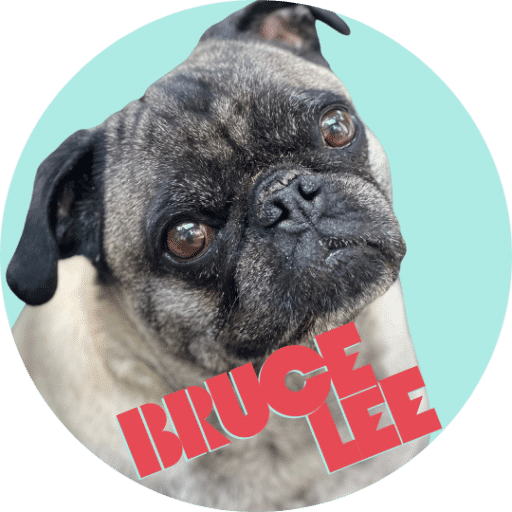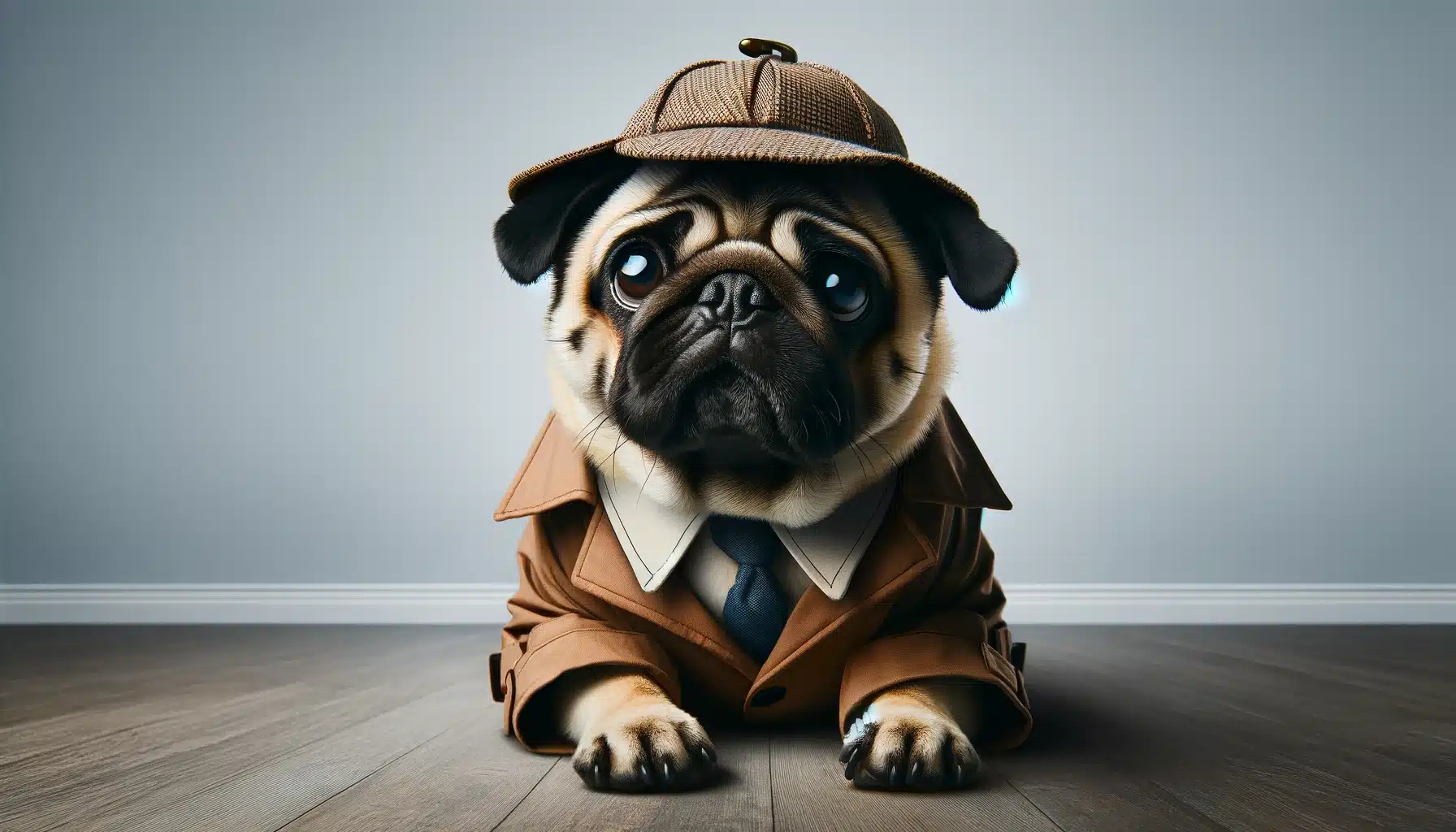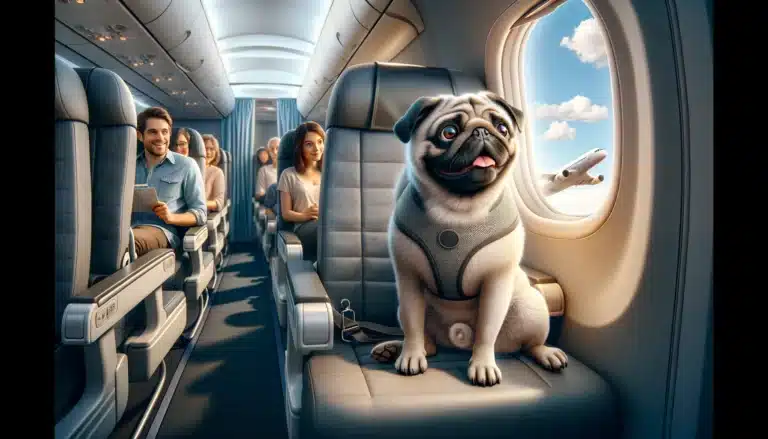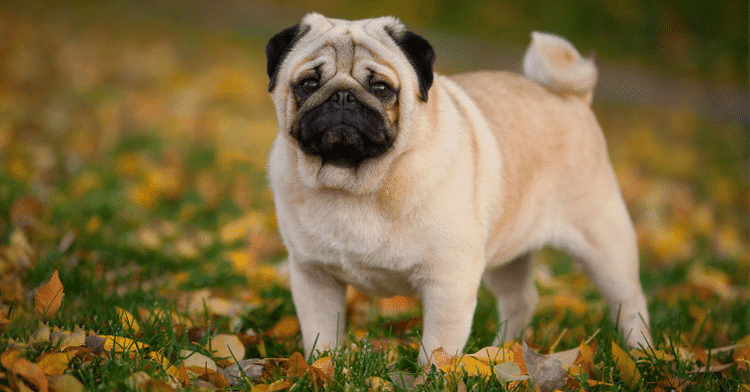Do Pugs Drool? Untangling the Slobbery Mystery
Introduction
Discovering do pugs drool can be puzzling for pug owners who often wonder if their furry companion’s slobber is normal or a sign of health issues. In delving into the slobbery mystery, we aim to untangle fact from fiction. This exploration covers not only the nature of drooling in pugs but also identifies when this behavior signals a deeper health concern. We look into the anatomical reasons why pugs might drool more than other breeds and address both normal and excessive drooling – its causes, implications, and management. As we unpack the reasons that lead to your pug’s drooling and the ways to handle it, we ensure that you are equipped with the knowledge to care for your drooling companion better.
Key Takeaways:
- Understand the natural and health-related reasons behind pug drooling.
- Identify the difference between normal and excessive drooling in pugs.
- Learn effective strategies for managing your pug’s drooling.
Do Pugs Drool?
All dogs produce saliva, and pugs are no exception, leading many to ask, “do pugs drool more than other breeds?” The extent of drooling varies significantly across different breeds, and pugs might seem to drool more due to their unique anatomical features. As brachycephalic breeds, pugs have a compact facial structure, which includes compressed jaws and large, pronounced lips. This physical trait, combined with their tendency for open-mouthed breathing—especially after exercise or in the heat—contributes to the observable phenomenon of drooling in pugs. So, while it’s normal for your pug to exhibit some degree of drooling, the reasons behind it are deeply rooted in their distinct anatomy.
Understanding Normal vs. Abnormal Drooling
Distinguishing between typical and excessive drooling in pugs, a question often summed up as Do pugs drool, hinges on understanding their unique physiology and behavior. Normal drooling occurs in various everyday situations such as excitement at meal times or during a heightened emotional state, involving a moderate amount of saliva.
Conversely, abnormal drooling, characterized by a sudden onset or significant increase in saliva production, or drool accompanied by other concerning symptoms, could signal underlying health issues ranging from dental problems to more severe conditions like heatstroke or respiratory distress. Observing your pug’s usual drooling patterns enables you to recognize deviations that warrant a closer examination or a consultation with a veterinarian. Prompt attention to unusual drooling behavior ensures your pug receives the care needed to maintain optimal health.
Causes of Moderate Drooling
Pugs, like any dog, have moments where they drool. This isn’t always a sign of trouble. Sometimes, it’s just a pug being a pug. Here are a few typical situations:
- Excitement or anticipation: Just seeing you might get the drool going. This response often happens when they expect food or a treat.
- Smelling tasty food: If something delicious is cooking, your pug’s instinctive reaction is to prepare to eat by producing saliva. This is entirely natural.
- Heat: On warmer days, pugs might drool a bit more as they pant to cool down, given their brachycephalic nature.
- Stress: New environments, or any situation that heightens their anxiety, can trigger an increase in drooling.
These instances typically don’t signal any health issues. However, keeping an eye on your pug’s behavior and drooling patterns can help ensure they stay happy and healthy.
Signs of Excessive Drooling
Noticing your pug’s drooling habits shift from the usual to excessive can signal a need for attention, raising the question, do pugs drool excessively? If you see your pug with a constantly wet chin or drool staining their bed, it’s time to watch closely. Excessive drooling stands out as it often pairs with unusual behaviors or health symptoms.
A pug leaving puddles of saliva or having drool strands hanging from their mouth isn’t just messy; it’s a sign that something might be wrong.
Drool that’s thicker than usual or discolored requires immediate vet intervention. Additionally, if your pug starts drooling excessively out of nowhere, particularly if they seem distressed, uncomfortable, or is showing other signs of illness like refusing food, it’s critical to act fast and seek professional advice.

Health Implications of Excessive Drooling
Excessive drooling in pugs often serves as a red flag for various health issues, raising the question, do pugs drool excessively? especially when considering a condition known as Ptyalism. This ailment leads to an abnormal increase in saliva production. Identifying this condition early can play a crucial role in addressing any underlying problems your pug may face.
Beyond Ptyalism, an inordinate amount of drooling might signal more severe concerns, ranging from gastrointestinal troubles, such as obstructions or upsets, to more alarming conditions like poisoning or heatstroke, especially in warmer climates where pugs are more susceptible to overheating.
In some cases, excessive salivation might even point to neurological disorders that require immediate attention. Therefore, monitoring your pug for signs of abnormal drooling isn’t just about comfort; it’s a vital component of their overall health management.
Common Causes of Excess Drooling
Pugs may drool for a range of reasons, each varying in severity, leading us to ask, do pugs drool? Encountering spicy food is a common cause, where their mouths water to dilute the spiciness, a natural but temporary reaction. In contrast, Brachycephalic Obstructive Airway Syndrome (BOAS) is a more concerning factor.
This condition, specific to brachycephalic breeds like pugs, leads to breathing difficulties, potentially triggering more drool, especially during physical exertion. Overheating is another serious cause, with pugs more prone to heatstroke due to their physical structure. Excessive drooling in this context indicates an urgent need for cooling.
Lastly, health problems, ranging from dental issues to more systemic diseases, can also lead to increased salivation. Unusual drooling warrants a vet visit to rule out or address underlying issues. While occasional drooling over treats or due to temporary discomfort is normal, persistent or excessive drooling is a flag for potential health concerns.
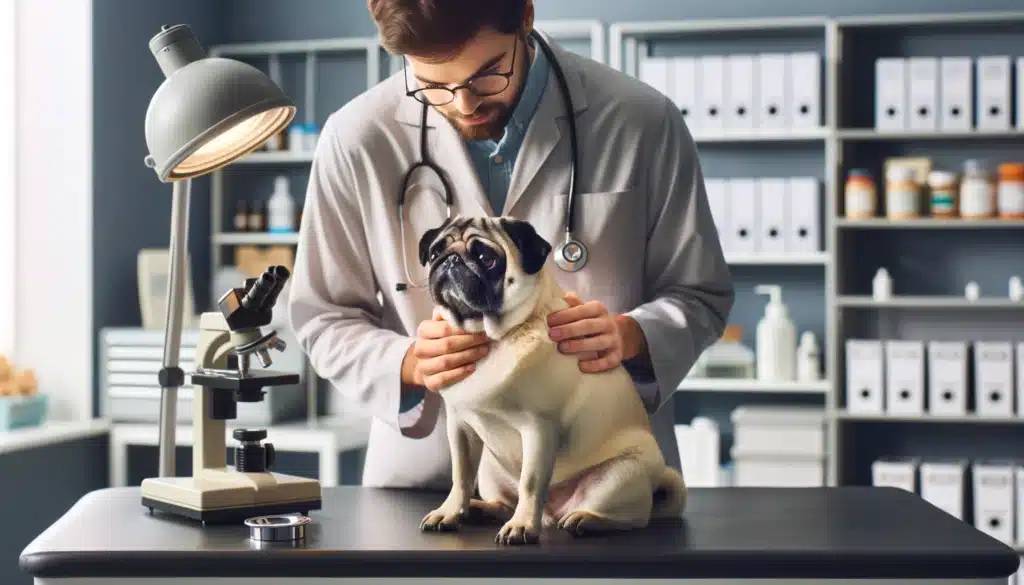
When to Visit the Vet
Not all drooling signals trouble, but it’s essential to recognize when “do pugs drool” shifts from a simple fact to a concern needing a professional opinion. Watch for drooling accompanied by other worrying symptoms. If your pug suddenly starts drooling more than usual without an obvious cause, it’s time for action. Other red flags include drool that’s thicker or more discolored than normal, indicating an underlying issue that requires immediate attention.
Additional signs prompting a vet visit include noticeable discomfort in your pug, a decrease in appetite, or refusal to eat, which could suggest oral pain or another discomfort. Pair excessive drooling with difficulty breathing, and the situation becomes more urgent, indicating potential serious health concerns. Remember, you know your pet’s normal behavior best. Any drastic changes, especially those involving hydration and drooling habits, merit a call to your vet.
Preventing and Managing Excessive Drooling
Drooling in pugs may not completely stop, but managing the flow is within your reach, especially if you’re wondering “do pugs drool” and how to handle it. Basic adjustments in their daily routine can decrease saliva production. Start by monitoring their diet closely. Avoid foods known to increase saliva, like spicy or sour items. Stick to mild, pug-specific fare that keeps their digestive system calm. Next, ensure they stay hydrated, especially in warm weather. A well-hydrated pug is less likely to overheat, reducing stress-induced drooling.
Keeping your pug cool is critical, as pugs are sensitive to heat due to their brachycephalic nature. Use fans, air conditioning, and ensure they have access to shaded areas when outside. Also, maintain a regular oral hygiene regimen. Clean their teeth and check their gums regularly to prevent diseases that could cause excessive drooling. Beyond health, involve them in soothing activities. Stress can trigger drooling, so a calm environment helps. Offer chew toys to help with teething or to give them a comforting item to focus on.
These simple, actionable steps aim for a happier pug with less drool to manage. Remember, consistency is key in any care strategy you adopt.
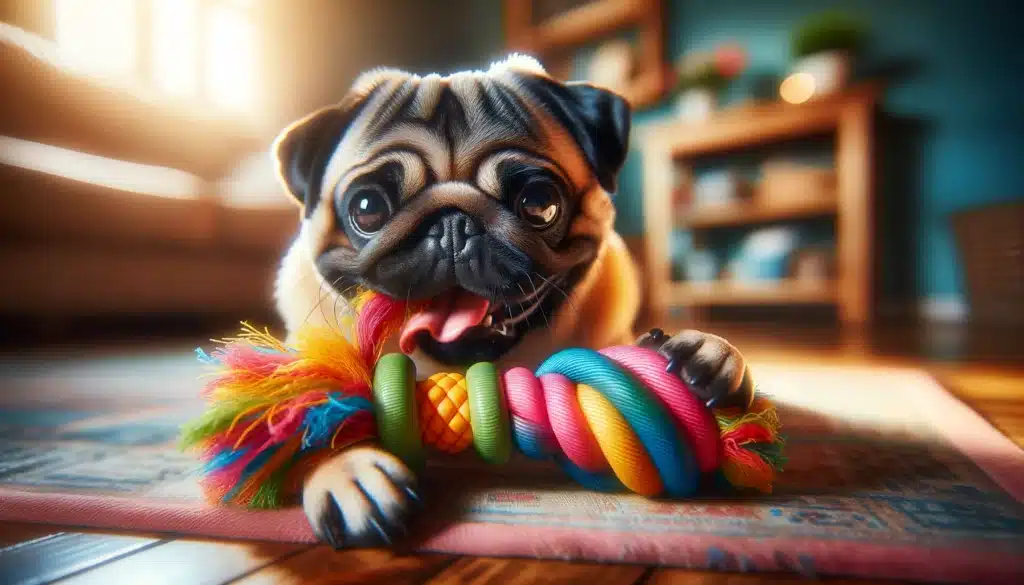
Chew Toys and Oral Health
I often observe pugs, especially teething puppies, drooling more than usual, prompting the question, “do pugs drool” due to natural stages like teething? This period does highlight concerns about oral health and the tools we can use to support it. Chew toys stand out as an effective solution. Not only do they provide relief during the teething phase, but they also promote better oral hygiene by helping clean the teeth and stimulate the gums. This can lead to a reduction in drooling as it keeps their mouths healthier.
Choosing the right chew toy is key. Opt for ones that are durable and designed specifically for dogs like pugs, who might have different chewing needs due to their brachycephalic breed characteristics. These toys can also distract your pug from the discomfort they feel during teething. As they focus on the toy, they produce less drool. While the reduction of drooling is a definite plus, the main goal here is to encourage a healthy chewing habit that supports oral health and keeps those pint-sized jaws strong and clean.
Emergency Situations: Heatstroke and Poisons
Heatstroke and poison ingestion require immediate attention if your pug starts showing unusual drooling patterns, raising the question, do pugs drool as a sign of distress? These situations can quickly turn life-threatening. For pugs, a breed susceptible to overheating due to their brachycephalic nature, drooling can be a clear signal of distress. They struggle more than other dogs to cool off, making them more vulnerable to heatstroke. Signs include excessive drooling, heavy panting, lethargy, and even collapse. If these symptoms present, you must act quickly to cool down your pet and seek veterinary care.
In cases of poison ingestion, drooling may also be accompanied by vomiting, diarrhea, seizures, or sudden changes in behavior. Many common household items, foods, and plants are toxic to dogs, and pugs are curious by nature. If you suspect that your pug has ingested something toxic, do not wait for symptoms to escalate. Immediate veterinary intervention can make a significant difference in the outcome. Remember, in both scenarios, drooling is not just a nuisance but a potential indicator of a serious problem.
The Emotional and Behavioral Aspects of Drooling
Understanding the emotional and behavioral triggers behind the question, “do pugs drool,” can offer keen insights into the well-being of pugs. These lovable canines frequently communicate through non-verbal cues, with saliva production playing a notable part. Excitement is one such emotion that can cause a pug to drool more than usual. Picture the moment you reach for their leash or they catch the scent of their favorite treat; the anticipation alone can lead to a display of these slobbery signs. This behavior mirrors their joy and eagerness, marking a stark contrast to when stress or nervousness is involved.
On the flip side, stressful situations could also amplify drooling in pugs. You might observe this during a visit to the vet or amidst loud, unfamiliar noises. This increased saliva production reflects an innate response to discomfort or fear, acting as a stress indicator that demands attention and reassurance. Observing the context and frequency of your pug’s drooling can provide valuable clues into their emotional state and overall health. Noticing these subtle cues requires patience and understanding but strengthens the bond between you and your furry companion, ensuring their happiness and well-being.
Caring for Your Drooling Canine Companion
Seeing your pug drool can be quite normal, sparking the question, “do pugs drool,” especially when it might require your attention. Distinguishing when drooling is part of their inherent slobbering or a sign of a deeper health issue is crucial. Regular monitoring of their drool can tell you a lot about their well-being. For instance, noticing a sudden increase in saliva could suggest your pug is facing issues like heatstroke or has consumed something they shouldn’t have.
For moderate drooling, often linked with excitement or the sight and smell of food, there isn’t much to worry about. This is quite natural for pugs, especially given their brachycephalic breed characteristics. Yet, for excessive drooling that seems out of the norm, a vet visit might be necessary to rule out any potential health concerns.
Preventive measures also go a long way in managing drool. Keeping your pug cool on hot days, engaging them with appropriate chew toys during teething, and ensuring they have a balanced diet are all practices that can minimize unnecessary slobber. Keeping an eye on the signs of abnormal drooling and acting swiftly can prevent any possible health risks, ensuring your pug remains happy and healthy. In essence, a balance between normal pug behavior and vigilance towards their drooling patterns will enhance your journey together.
And In The End, It’s All About Drool Management
After exploring the sometimes wet and wild world of pug drooling, it’s clear that a bit of dribble is part and parcel of sharing your life with one of these affectionate, albeit sometimes drooly, companions. Embracing this fact, while also being vigilant about the distinctions between normal and excessive drooling, can significantly enhance your cohabitation experience. Acknowledging drool as a standard aspect of pug life is the first step. But, recognizing when “do pugs drool” shifts from a quirk to a potential health indicator is vital for their well-being.
Normal drooling, brought on by excitement, hunger, or even stress, is usually no cause for alarm. These moments offer a glimpse into the emotional world of pugs, displaying how they react to the world around them. On the flip side, excessive drooling requires attention. As we’ve discovered, while some causes of significant drool are benign, others may signal underlying health issues. Regular checks and being in tune with the amount and type of drool can help catch issues like Ptyalism, heatstroke, or even BOAS early on.
Drool management doesn’t have to be a daunting task. Simple steps can make a world of difference. Keeping your pug cool in hot weather, managing their diet, and offering appropriate chew toys not only lessen the likelihood of excessive drooling but also contribute to their overall health. Regular vet visits are crucial, too, enabling professional oversight of your pug’s health and timely intervention if necessary.
Yet, none of this management takes away from the joy of being a pug owner. Yes, there might be a bit more laundry and perhaps the occasional need for a mop, but these are small prices to pay. In exchange, you receive unconditional love, boundless affection, and the unique personality each pug brings into your life. In fact, understanding and managing drooling can deepen the bond between you and your pet. It’s a signal of your commitment to their health and happiness, ensuring they’re as comfortable and cared for as possible.
In the end, owning a pug is all about love, understanding, and sometimes, a little bit of drool. By embracing all aspects of pug life, including their quirky drooling tendencies, we create a more harmonious and happy living environment for our furry friends. They enrich our lives daily, asking little in return but love, care, and the occasional tolerance of their slobbery kisses. With the right approach, drool management is just another part of the adventure, one that’s well worth it for the joy of having a pug in your life.
